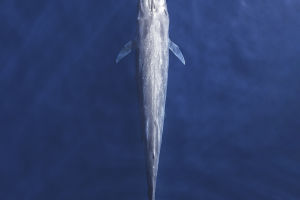Strange Secrets of Dolphins
The ocean's playful acrobat, the bottlenose dolphin, has long captivated humans with its grace and speed.
A new breakthrough reveals how these remarkable creatures generate the power necessary to glide effortlessly through the waves.
Recent experiments have shed light on their incredible swimming abilities, challenging previous scientific assumptions and changing the way the world views these intelligent marine mammals.
The Paradox Uncovered
The mystery surrounding dolphin speed began in 1936, when British researcher Sir James Gray conducted pioneering studies on their swimming techniques.
Observing a dolphin effortlessly circling a ship at a breathtaking speed of 33 feet (10 meters) per second, Gray was left in awe. How could such a seemingly large creature maintain such velocity? His findings sparked a debate in the scientific community concerning the physics of dolphin locomotion.
According to physics, the dimensions and swimming speed of a bottlenose dolphin should create a turbulent water flow rather than a smooth one. This turbulent flow increases the drag force acting against the dolphin while swimming, suggesting that they should struggle to maintain high speeds.
Yet, contrary to this hypothesis, dolphins showcase remarkable agility in the water.
The Muscle Mystery
When Gray analyzed the dynamics of dolphin swimming, he applied the variables to his equations assuming turbulent flow, and the outcome was startling. His calculations revealed that, given their muscle mass, dolphins appeared insufficiently equipped to generate the power required for such rapid swimming.
This contradiction between theory and observation created a paradox that mystified researchers for decades.
Understanding this phenomenon became an important pursuit in marine biology, leading to numerous studies that attempted to unlock the secret behind dolphin propulsion.
Recent advancements in research illustrate that dolphins have developed specialized swimming techniques which allow them to minimize drag and maximize speed, all while appearing to move effortlessly through the ocean.
The Joy of Exploration
The excitement surrounding this revelation adds to the burgeoning field of marine research. Understanding how dolphins navigate their aquatic world can offer insights into their exceptional hunting strategies, migratory behavior, and social interactions.
Researchers are keen to discover how these findings might relate to other sea creatures, and potentially even inspire innovations in human aquatic technology.
Marine biology continues to evolve as scientists delve deeper into the lives of dolphins and their underwater realm. By exploring their intricate swimming patterns, researchers are unlocking valuable information that can enrich our understanding of the ocean's environment and its inhabitants.
As mysteries of the bottlenose dolphin gradually unravel, there is hope that this knowledge can lead to better conservation methods for marine life. The enchanting grace and agility of these intelligent creatures fosters a deeper appreciation for the wonders of the ocean.
Continuous exploration will only expand the fascination with dolphins and the secrets they hold beneath the waves, ensuring their legacy remains celebrated for generations to come.
Facts About Dolphins : How Fast Can Dolphins Swim?
Video by ehow


